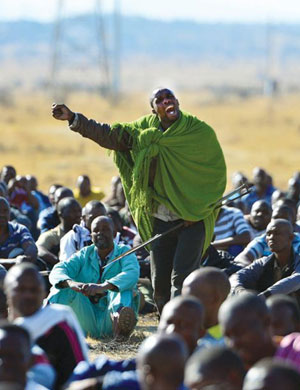April 28, 2015
6 p.m.-8 p.m.
Room c201
The Graduate Center, CUNY.
The Marikana massacre, which witnessed 34 mineworkers being gunned down by the police on 16 August 2012 arguably marked a key turning point in South African history. However, we know very little about the informal networks that were created by mineworkers in order to challenge management not only at Lonmin (Marikana), but also at Amplats and Impala – respectively these are the three largest platinum mines in the world. The presentation is a glimpse into the first (forthcoming) book which offers extensive workers’ testimonies in relation to the contemporary South African mineworkers’ movement since “Marikana: A View from the Mountain and a Case to Answer”.
Drawing primarily from ethnographic research over a period of more than 18 months, Luke Sinwell details how mineworkers united with each other and, in some cases, died while fighting for their rights. It illuminates the micro-processes through which the idea of ‘a living wage’ of R12 500 and R16 070 first emerged from a conversation between two sets of workers in a change room at each respective mine and then spread like wildfire across the industry and soon shook an entire nation. Mineworkers, through their ad hoc. independent worker committees, challenged the ‘pocket unionism’ exemplified by the National Union of Mineworkers, thereby instilling a new radical political culture at the mines –one based on workers’ needs rather than bosses’ interests and informed by notions of direct democracy.
The event is open and free to the public. Spondored by the Center for Place, Culture and Politics, Graduate Center, CUNY.



